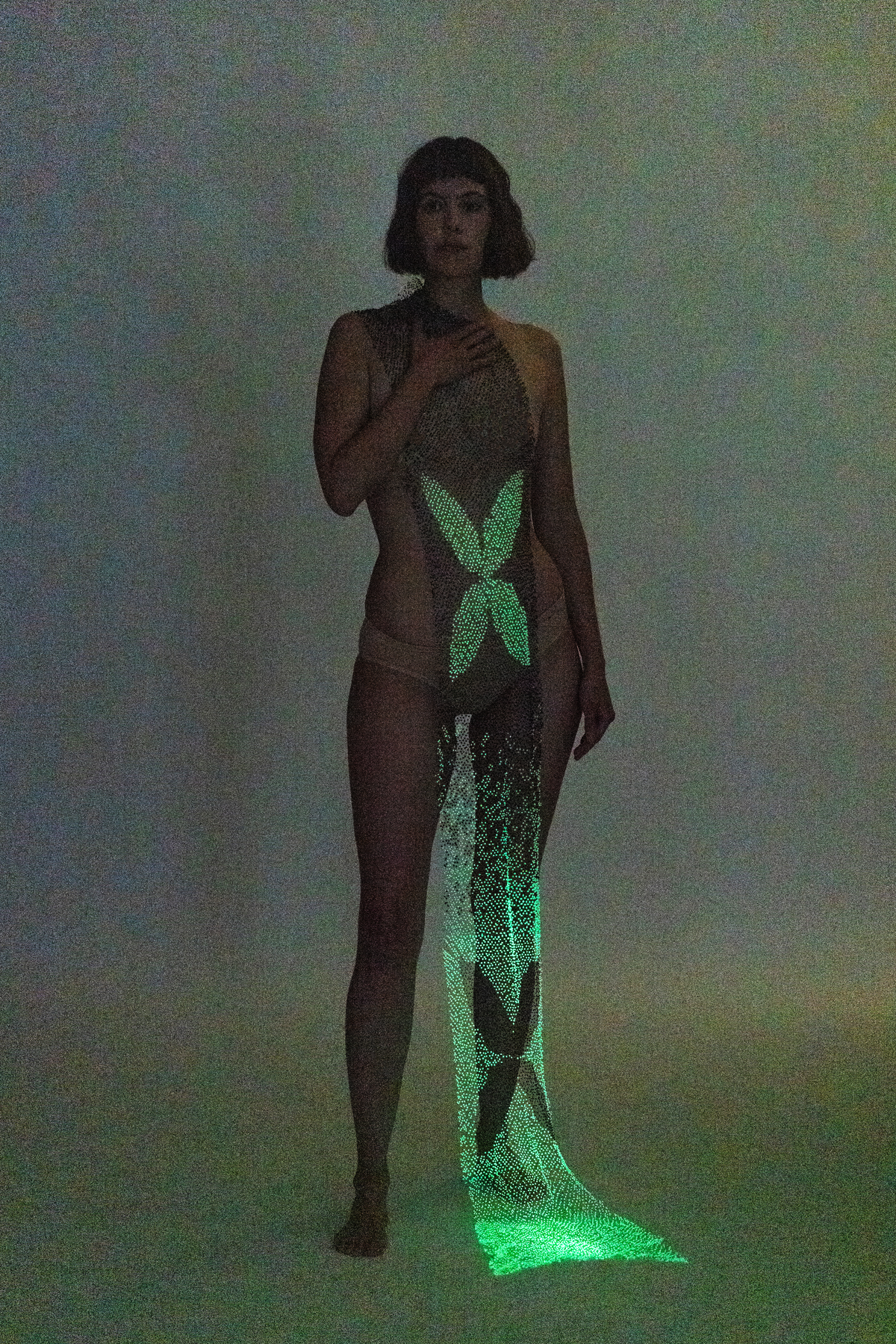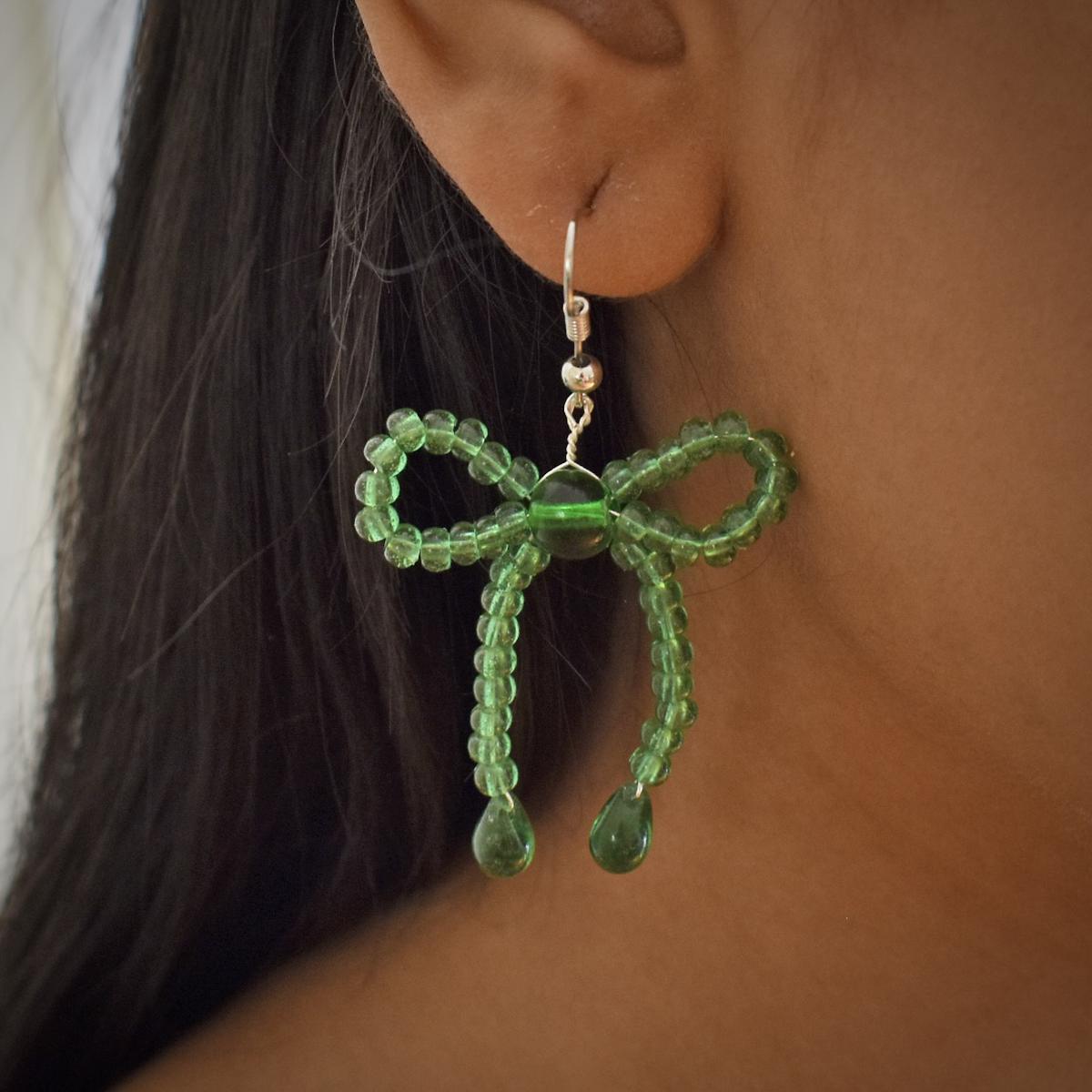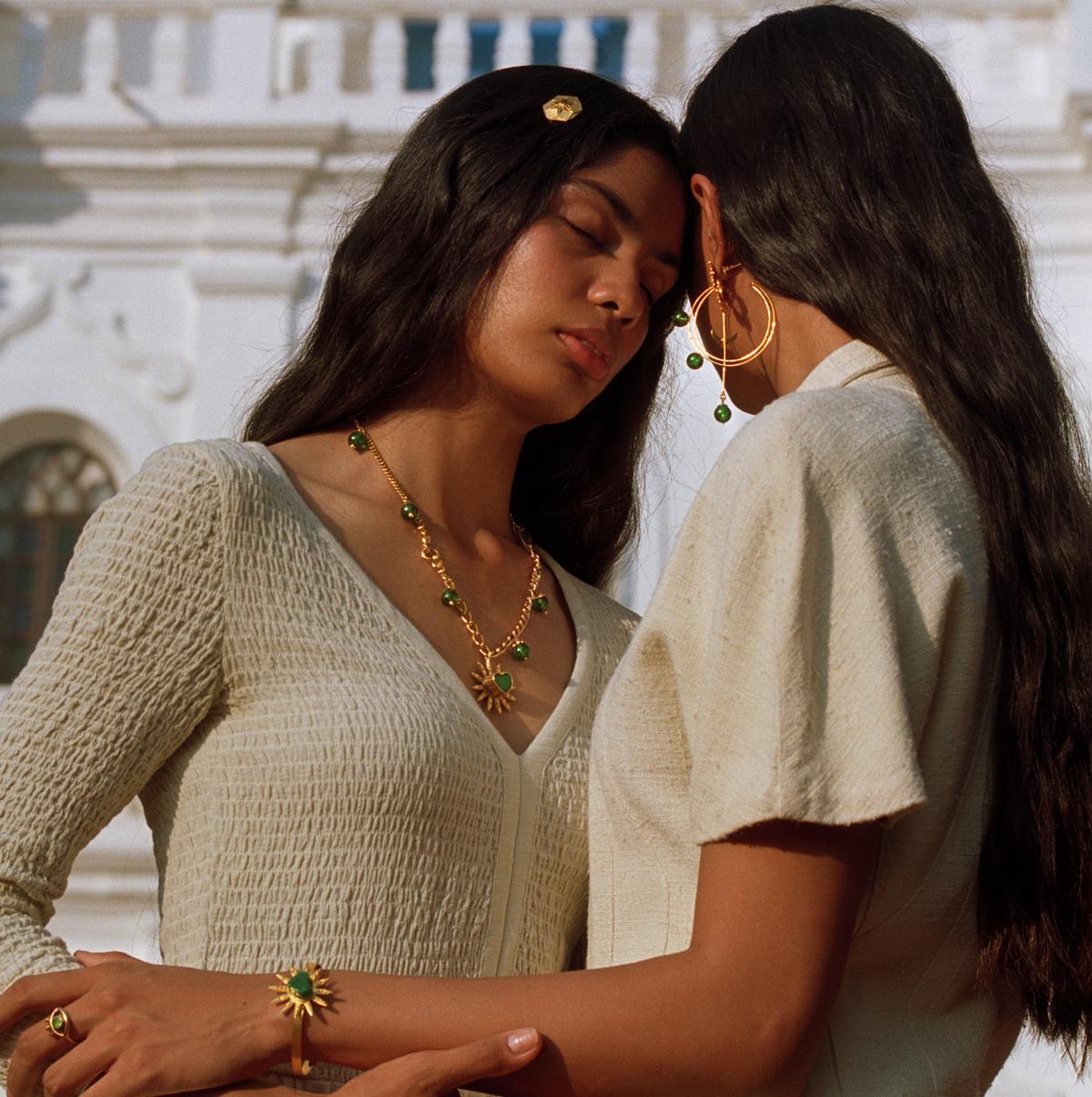
According to a 2019 UN report, it takes close to 7,500 litres of water to create one pair of jeans. As per a 2023 report by environmental news website earth.org4, each year approximately 92 million tonnes of clothes end up in landfills. These alarming statistics prompted New York-based designer Aradhita Parasrampuria to create CellSense in 2022, which makes carbon-neutral, bioluminescent materials for embellishments. Last month, the brand was one of the 11 winners of the Redesign Everything competition by Amsterdam-based What Design Can Do, that promotes sustainable brands and initiatives.
Aradhita Parasrampuria
| Photo Credit:
Special Arrangement
Quite candidly, Aradhita says she chose to be a fashion designer because it was “glamorous”. So, the wide-eyed, 20-year-old, who admires the work of Alexander McQueen, joined the prestigious Parsons School of Design. She soon realised that fashion is quite wasteful and started research on material that would be carbon neutral. “Algae’s base properties sequesters carbon; it grows rapidly, is naturally hydrophobic, and anti-microbial. This makes it a great candidate to use as a base material,” says the designer who worked with other materials such as fruit and vegetable dyes, but, algae and cellulose led to the creation of a bio-composite which was transparent, durable and had excellent colour retention. Her latest collection comprising eight limited-edition necklaces with beads developed from renewable algae cellulose — that launched this month — sees her collaborating with French jewellery designer Nathalie Pommier.
After Aradhita completed her BFA (Bachelor in Fine Arts) from Parsons in 2022, the Swarovski Foundation funded her project, and CellSense was born. She worked with algae because she found it to be an interesting material. “It absorbs up to 50% of carbon from the atmosphere and generates atmospheric oxygen,” says Aradhita, who was featured in Forbes India 30 under 30 in 2023. “Algae is also one of the most rapidly growing organisms in the world. So, if done correctly and responsibly, growing and developing algae is a good thing.”

Bioluminescent beads as a garment accessory
| Photo Credit:
Special Arrangement
These materials are created in a lab, using algae as its base. And its use extends to make-up, jewellery, and décor. “In 2021, I worked at a textile factory in Gujarat for three months, where I noticed the workers had skin disorders or asthma because of the synthetic dyes they use. It was a commonly known fact that the dye master would die of a heart attack. This shifted my view completely. I had gone into fashion with a very romantic view of what the industry was. I returned to New York, where a lot of them never really talked about the impact production was having on the people involved. This motivated me to look for alternatives,” she says.
With a quest for sustainable fashion, Aradhita enrolled at Genspace, a community-driven laboratory in New York. There, she learned biochemistry and started experimenting with bacteria to produce colour. She kept researching and learning about natural dyes. But, to create natural dyes from avocado or other natural sources, required water, land, and human labour. But developing bacteria uses significantly less amount of water.

Jewellery by Cellsense
| Photo Credit:
Special Arrangement
In the meantime, Aradhita started working as an embellishment designer for a well-known fashion label in 2022. She realised, “There were no eco-friendly options available — only plastic, synthetic resin, or wood. And embellished garments were very wasteful as people would wear them only for parties and weddings. Soon, they would end up in landfills,” she says, adding, “It is difficult to weed out the plastic from these discarded garments as it tends to be so small in size. So, I started to grow algae and develop embellishments by combining it with cellulose and adding microbial dye, which I had developed with the bacteria.”
Aradhita conducted over 130 experiments to get the perfect formula. “I would be in and out of the lab for months together, reading, researching ways to create biomaterials. During COVID-19, at one point, I had several jars of algae in my kitchen,” she chuckles. Thankfully, today her home is algae-free as she sources algae from GreenWay, a US-based company that trains and supports farmers who opt for regenerative ocean farming.

Roma Narsinghani X Cellsense collab
| Photo Credit:
Special Arrangement
According to her, long-term sustainable fashion boils down to using sustainable materials and not just guilting the consumer to buy less. “The change should come from policy-makers. In Europe sustainability policies have been enforced; projects are funded, people are hired to work on it — a combination of these factors will result in long-term sustainability,” says Aradhita, who has also collaborated with jewellery designer Roma Narsinghani. “If you leave products made from bioluminescent algae out in the sunlight for two hours, it will glow in the dark for two hours. And so, when something goes wrong, they would be more likely to repair it than discard it,” she says.
The next step for the designer is to come to India, reconnect with karigars, and show them the biomaterials she created; document their experience and eventually, set up something in the country.





